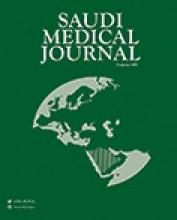Abstract
OBJECTIVE: To further elucidate the mechanism of the anti-fibrogenic role of pigment epithelium-derived factor (PEDF) on diabetic nephropathy.
METHODS: Human glomerular mesangial cells (HMCs) were treated with 30mmol/l D-glucose for different time intervals (6, 12, 24, and 48 hrs). To examine the beneficial effect of PEDF, we incubated the HMCs with high glucose (30mmol/L) in the presence of different concentrations of PEDF (10, 40, and 100nmol/l) for 24 hrs. The study took place in the Laboratory of Endocrinology, Renmin Hospital of Wuhan University, Wuhan, China between July 2012 and December 2012. Transforming growth factor-beta1 (TGF-beta1) and fibronectin (FN) mRNA was measured by reverse transcription-polymerase chain reaction (RT-PCR). The protein synthesis of TGF-beta1 and FN in the culture medium of HMC was detected by enzyme-linked immunosorbent assay. The phosphorylation levels of Janus kinase2 (JAK2) and signal transducers and activators of transcription1 (STAT1) were measured using western blotting.
RESULTS: The exposure of HMCs to 30 mmol/L glucose caused the activation of JAK2 and STAT1. It upregulated TGF-beta1 expression and increased protein synthesis of FN. These high glucose-induced changes were suppressed by PEDF.
CONCLUSION: The PEDF can decrease the expression of TGF-beta1 and FN, possibly by inhibiting the phosphorylation of JAK/STAT, which may offer a promising strategy in the treatment of diabetic nephropathy.
- Copyright: © Saudi Medical Journal
This is an open-access article distributed under the terms of the Creative Commons Attribution-Noncommercial License (CC BY-NC), which permits unrestricted use, distribution, and reproduction in any medium, provided the original work is properly cited.






